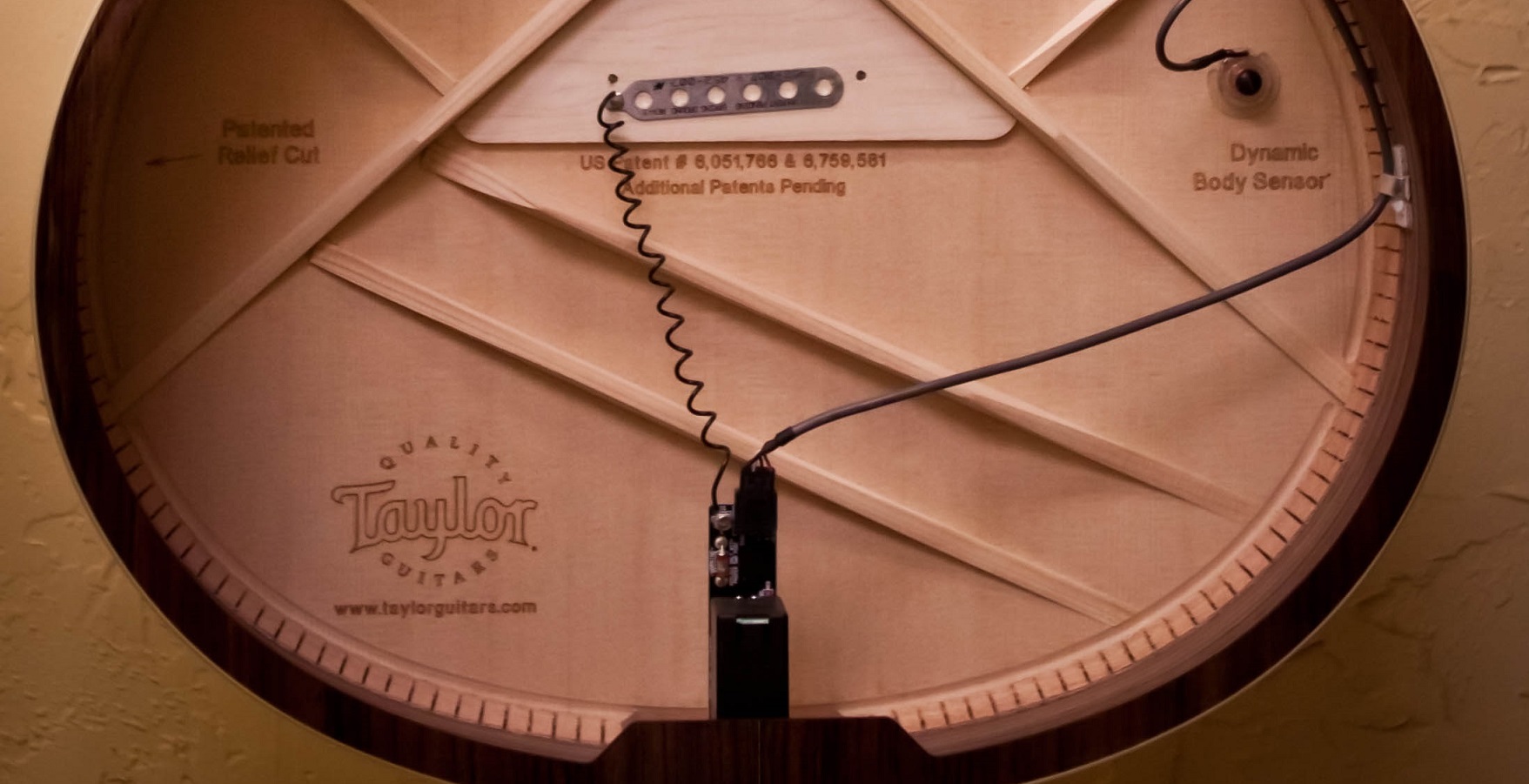Piezo pickups are installed inside the body of the guitar, where they often can’t be seen. Piezo pickups produce a sound which is clear, pronounced and transparent, with minimal feedback.
Pros
Piezo pickups detect their vibrations from the saddle of the guitar, where the strings are particularly tight. As a result, the sound is often extremely bright and clear, with plenty of attack – every note is defined. They have a broad dynamic range, so the nuances of your playing shine through pretty accurately. If you play softly, your guitar’s signal will be quiet; strike hard, and the guitar will bellow accordingly.
Because they exclusively detect vibration and get no sound from the inside of the guitar, they’re almost totally resistant to feedback. This makes them brilliant for loud, live performance situations – no ear-splitting feedback or hum to worry about!

Cons
Piezo systems produce a fairly low output, meaning they often need to be boosted via a preamp. In some cases, the sensitivity of their dynamic range requires that the signal be compressed and boosted at the same time, which can quite drastically colour the tone of your instrument. In addition to this, the phenomenon of ‘piezo quack’ is well-known among the guitar community; it refers to the sensor or preamp getting overloaded and producing an unattractive nasal quality.
Piezos are also notoriously fiddly when it comes to fitting. They’re most often found pre-fitted to instruments, but if you fancy fitting one yourself, you’d best prepare for a challenge!
Soundhole Pickups
Unlike a piezo, soundhole pickups are usually visible, bridging the soundhole on the outside of your guitar. Soundhole pickups are magnetic like electric guitar pickups, directly detecting vibrations of the strings.
Pros
As mentioned earlier, soundhole pickups detect vibrations in your guitar’s strings using magnetic fields. These magnetic systems can sometimes produce a clear sound that’s similar to an electric guitar – because they’re essentially the same as electric guitar pickups. The output is often similar too, so there’s little boosting required to bring them up to a decent level – but that’s down to preference to some degree!
Magnetic systems are usually super-easy to install; you’ll recognise them as the pickups that simply bridge the gap of your guitar’s soundhole. They often simply require slotting in, sometimes with a few turns of a screwdriver.

Cons
Because they rely on vibrations of the strings, soundhole pickups can be a little more susceptible to feedback. Some people also aren’t always keen on the almost-electric quality of these systems, especially given the fact that they’re fitted to acoustic guitars. Again, it’s totally subjective!
Summary: the difference between Piezo and Soundhole pickups
| Peizo |
Bright and clear, with broad dynamic range. |
Virtually invisible. Feedback-proof. |
Low output requires boosting. Fiddly to fit. |
| Soundhole |
Clean in a similar way to electric guitars. |
Easy to fit. Little boosting required. |
Highly visible. Prone to feedback. |
There you have it! Many companies offer combinations of pickup choices; many Sire acoustic models feature both piezo and magnetic pickups for a versatile blended tone. Brands like LR Baggs also produce hybrid pickups which combine piezo, magnetic and/or microphone for a great natural sound. You’ll often find LR Baggs electronics included in popular acoustic models from Alvarez, Gibson, and many more.
Want to learn more?
Want to know more about acoustic pickup choices? It doesn’t end at piezo and soundhole. Check out our guide to acoustic pickups! And while you’re here, check out the rest of our labs & learn content – enjoy!





Responses & Questions